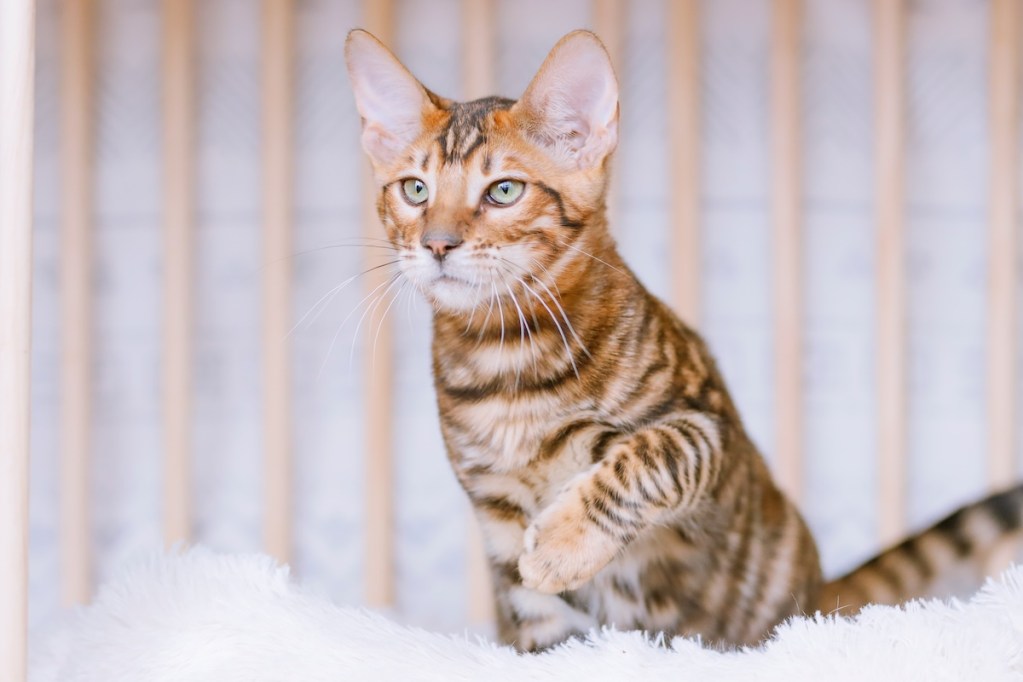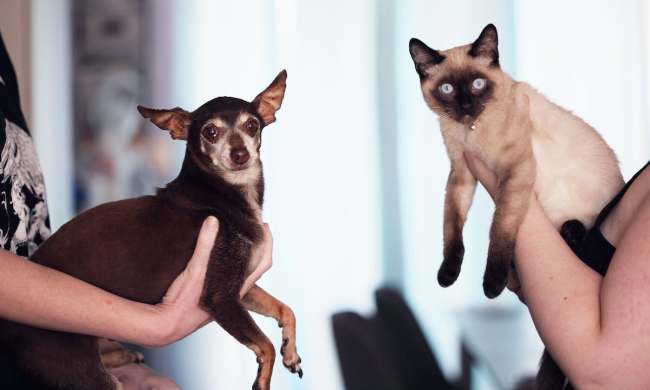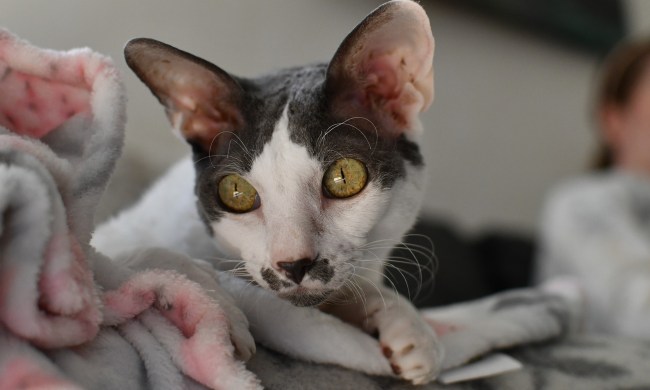It’s been everyone’s dream at some point to have a wild cat living in the house — a tiger, lion, or leopard in particular. While that should stay out of reach for most of us, you can have the cutest tiger-looking cat imaginable by bringing home a toyger, short for “toy tiger.” These playful but sweet kitties are absolutely gorgeous and have been bred specifically to resemble their distant striped cousins.
Thinking about welcoming a toyger cat into your family? Here’s everything you need to know about the little beasties.
The history of toyger cats

One of the most recent cat breeds, toygers came about in the ’80s, bred by the daughter of Jean Mill, who made the Bengal breed. As you might already expect, these tiny tigers are descended from the Bengal (no relation to actual tigers, though).
Judy Sugden, their progenitor, worked tirelessly to get the subsequent generations to look more stripey and eventually succeeded, creating the first toyger kittens. Now the breed has been officially recognized by The International Cat Association and can be found across the country and the world, with some difficulty, we might add.
How much does a toyger cat cost?

Getting a toyger cat will set you back quite a bit for the average toyger, because it’s a particularly rare breed. They also have varying patterns, meaning some coats are more desirable than others, and breeders may ask for an extra sum for especially in-demand cats. Unfortunately, it’s incredibly unlikely you’ll find an adoptable toyger anywhere without a fee, though some specialized or purebred rescues might have them. If you do go through a breeder, prepare to spend up to $3,500. That’s in addition to all the usual costs that go with having a cat.
The good news is that this sweet pet doesn’t have many extra costs outside of the norm, though some states require special registration or permits because they’re descended from Bengals. Check into your local laws, HOA regulations, or apartment rules before getting one just to be safe.
Toyger cat facts

In many ways, the toyger is your typical cat, but they have a few special characteristics as well — part of the reason so many people want to have one.
Personality
You really can’t go wrong on the personality side, as toygers are affectionate, family-friendly, and intelligent pets. Be mindful that this breed needs lots of exercise and likes to play, so have a few cat trees and plenty of cat toys around. One more beneficial attribute: Toygers get along with kids and other pets, including some dogs.
Appearance
Here’s where your new animal will really stand out. Known for their striped appearance, toygers do look like mini tigers with bright blue or green eyes. Everyone will be dazzled by your pet if you have a toyger. You’ll also notice they have circular markings on their heads, unique among cats. Lastly, the complete look of this cat is random, meaning you can find wildly different patterns even within the breed. It also means you might struggle to get your preferred fur color, especially if your budget is pretty limited.
Diet
It’s all good news here, since your toyger will eat basically the same as any other breed. However, these smallish kitties only reach between 7 and 15 pounds, so you don’t need to give them too much food. Obesity represents one of the biggest problems in cats and can lead to long-term health issues.
Health
Because there are so few toygers out there, researchers and cat doctors don’t have a comprehensive understanding of their health issues. However, some research suggests that they may be at risk for heart murmurs. Have your vet specifically listen for this during their routine appointments and talk to them about options if your pet doctor does discover a murmur (many require no treatment and don’t affect life expectancy).
Aside from the rarity and cost, there’s no reason we can think of not to get a toyger. They’re gentle yet energetic and beautiful yet require little grooming. Some even like to go for walks and can become leash-trained cats or learn a few basic commands. Altogether, you’re basically guaranteed to have a purrfect pet on your hands. Keep in mind, while an excellent choice for many families, not everyone will do well with a toyger. They do need a lot of stimulation and are fairly vocal, so a small apartment might not be the best fit for this bud. Still, if you find yourself a toyger owner, you’ll have many years of fun with your tiny tiger.




